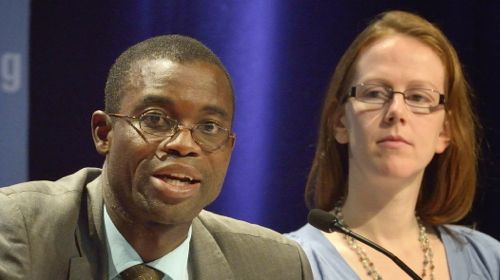Earlier this summer, Malawian religious leaders and people living with HIV met for a day of dialogue about HIV-related stigma and discrimination and how faith groups can respond at a national level.
The meeting was an early step in a pilot program between the Ecumenical Advocacy Alliance (EAA), the Global Network of People Living with HIV (GNP+), UNAIDS and INERELA+, a network of religious leaders living with or personally affected by HIV and AIDS.
As a result of that first meeting in Malawi, the groups have laid out a framework for dialogue that aims to increase communication and understanding between faith groups and people living with HIV.
“It’s become clear to me that we’re speaking different languages but we mean the same thing,” said Kevin Moody, international coordinator and CEO of GNP+. He was speaking at a 25 July press conference at AIDS 2012 about the initiative.
He’s not a person of faith, but nearly 90 percent of people living with HIV are, Moody said. These people need a place to go where they are loved and safe from stigma.
Religious leaders have positions of power in many countries, including Malawi, said Safari Mbewe, executive director of the Malawi Network of People Living with HIV and AIDS. But they haven’t always been involved in discussions about HIV. This dialogue creates an opportunity for leaders to learn more about the issues and plants the seed for long-term relationships, Mbewe said.
Religious leaders need to be taught to use their prophetic voices, not abuse them, said Robert Ngaiyaye, executive director of the Malawi Interfaith AIDS Association.
The dialogue program can equip leaders with language they can use in the pulpit, Ngaiyaye said. Some progress has already been made: although Malawian religious leaders aren’t handing out condoms from the pulpit, they are talking about them when they used to never even speak the word.
Information about the realities faced by people living with HIV is a key aspect of the dialogue program. Chris Mallouris, a consultant with the EAA, spoke about a stigma survey of Kenyans living with HIV that found that 38 percent had been physically harassed and 31 percent had been excluded from their place of worship because of their status.
That information needs to be shared with faith leaders, and “we need to base dialogue on evidence,” Mallouris said.
Faith groups must understand the obstacles many people living with HIV face in the areas of stigma, shame, access to quality treatment and status-related job loss, he said.
“Dialogue happens all the time at the local level — it needs to happen at the national level,” Mallouris said.
Both sides of the dialogue must be open and forthcoming, speakers said. But Ruth Foley, EAA’s HIV campaign coordinator, stressed the importance of breaking down the power dynamic and cautioned against setting up an “us and them” point of view. Rather, dialogue participants should strive to see themselves as an “us.”
The dialogue project is one of the outcomes of a March 2010 high-level summit of religious leaders on the response to HIV. Further pilot dialogues will be held to refine the framework, which will then be made widely available to encourage joint learning and action between religious leaders and people living with HIV.

